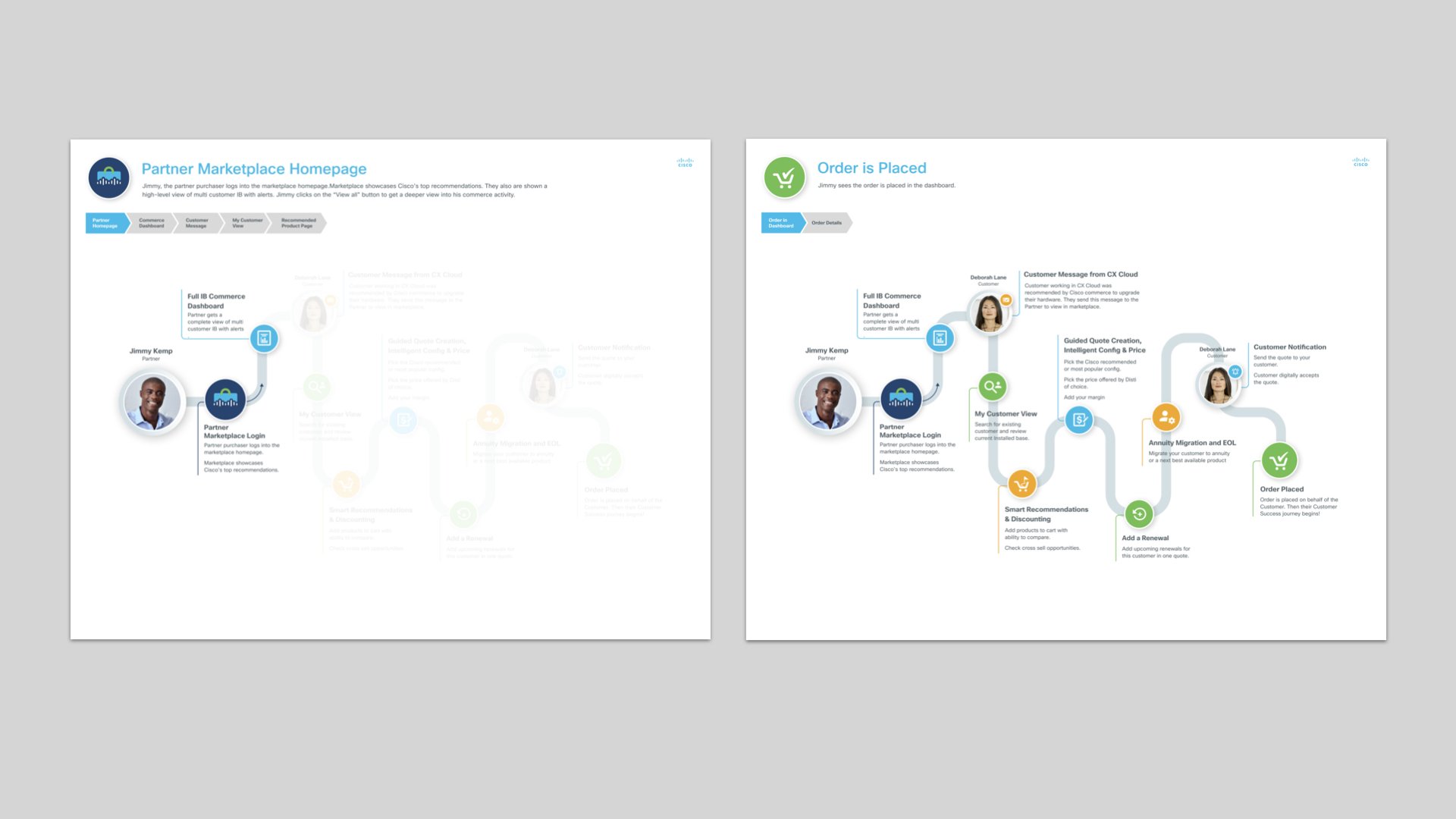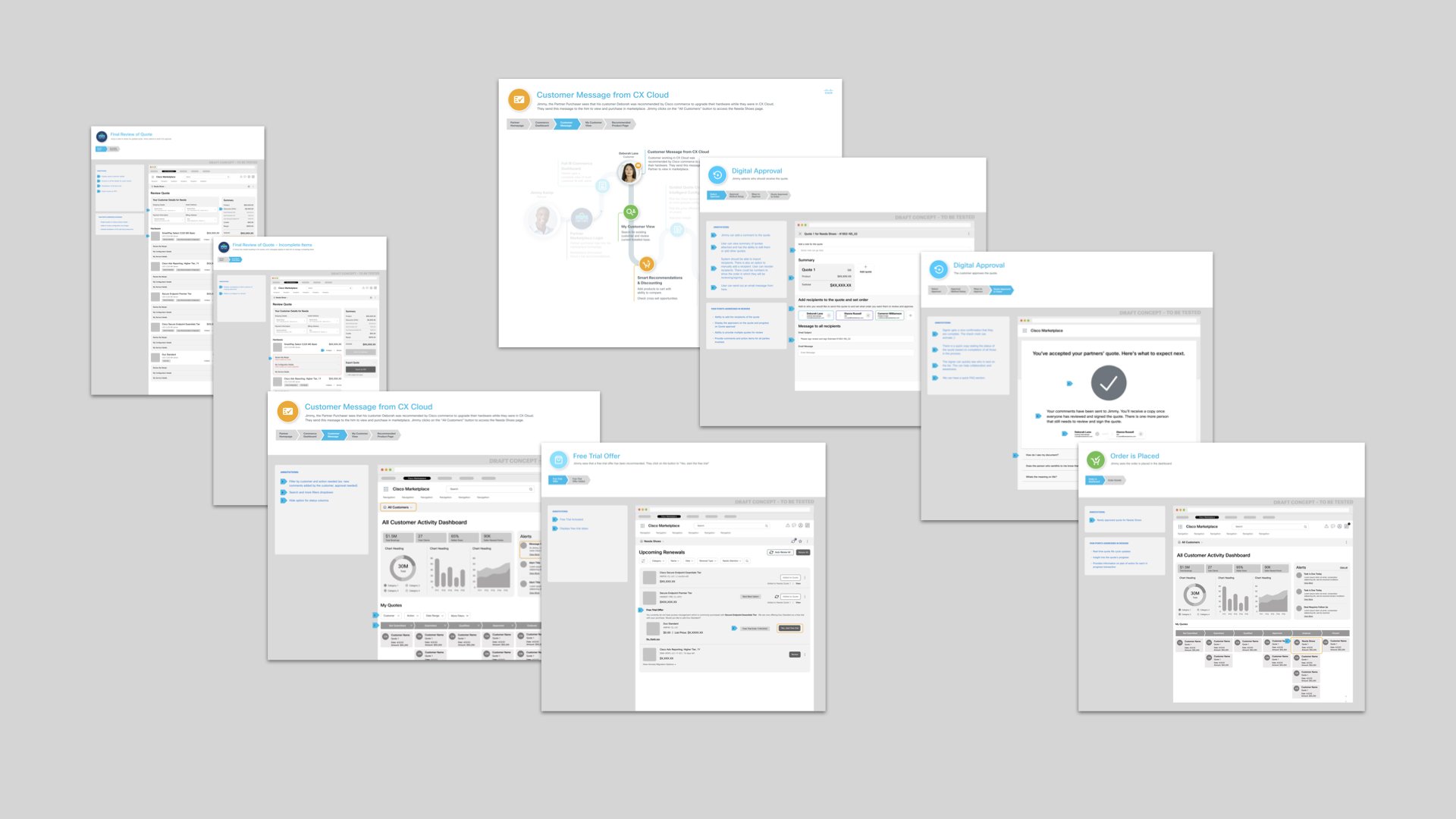BRYAN JAYNE
Product Design, UX Strategy, Systems & Leadership for Fortune 500 to AI Startups
Elevating Complex Workflows with Scalable, AI-Driven UX
From GenAI-powered interactions to enterprise-grade platform tools, these three projects show how I simplify complexity and deliver intuitive solutions for data-heavy, multi-role experiences.
Whether aligning engineering and executive teams at Cisco or transforming user onboarding for a GenAI retail startup, I design with purpose—using deep user insight, scalable systems, and thoughtful interaction design to support real-world business and user needs.
Cisco Enterprise GenAI Chatbot: Unified a fragmented AI experience into a scalable, intent-driven GenAI assistant—boosting usability and confidence across Cisco’s CX Cloud platform.
Cisco Customer Lifecycle & Commerce Tools: Designed end-to-end enterprise UX for partner management, purchasing, and contract documentation—clarifying multi-role workflows and driving team alignment.
Ask AI (GenAI Retail Startup): Created mobile and kiosk UX for a GenAI-powered retail assistant—enhancing first impressions, chat flows, and product clarity to accelerate adoption and multimillion-dollar growth.

CISCO ENTERPRISE GENAI CHATBOT
AI-Powered Support UX Across Enterprise SaaS Ecosystem
Applicable to roles that need: AI UX, modular service design, enterprise platform thinking, and cross-functional alignment
Role: Principal Designer – GenAI design and strategy
Collaboration: AI engineering · Customer Support Teams · Product Leadership · Content Strategy · Design Leadership · CX Design Team · VP Stakeholders
Problem and Approach: Cisco’s CX Cloud is a SaaS platform that helps enterprise network managers realize the full value of their Cisco investments by guiding them to the right support, insights, and actions. The existing AI-powered chatbot was fragmented and underutilized, lacking a cohesive interaction model, enterprise-scale support, and the ability to take advantage of new GenAI capabilities.
I led the end-to-end UX strategy and design for the next generation of the GenAI CX chatbot. My first step was aligning stakeholders across product, engineering, and leadership to define what a truly holistic AI assistant could look like across the full CX Cloud ecosystem. I articulated a future-state vision and broke it into four focused design workstreams, each covering a distinct interaction layer or content scope.
From there, I developed a set of core design principles, mapped high-level interaction frameworks, and partnered with content leads to define how the chatbot should behave across different service tiers. I created scenario-specific design examples, interaction rules, and scalable UI components using Cisco’s enterprise design system. These not only showed how the chatbot would operate across use cases—but how it could deliver differentiated, high-value service experiences based on user intent and complexity.
Deliverables:
AI assistant interaction frameworks
Design principles + behavioral logic
Scenario-based UI and conversation models
Executive presentations and storytelling
Modular UI components for design system
Cross-team strategy documentation and phased roadmap
Impact:
Chatbot UX strategy approved by VP to guide platform-wide expansion
Interaction model used to align AI product roadmap across teams
Specific features shipped to production via sprint-based delivery
Unified fragmented chatbot into a strategic support assistant
Reflection & Why It Mattered: This work turned a disconnected chatbot into a scalable, enterprise-grade AI assistant by aligning design, product, and engineering around a shared interaction model. By leading with strategy, modularity, and behavioral clarity, I helped lay the foundation for how Cisco’s AI support will scale with future technology capabilities.
Full Case Study: If you’d like to talk or see a full case study please email me at bryanjayne@gmail.com.

Example screens from presentations defining the design strategy with stakeholders

Examples of interaction documentation to align with product, development, and other stakeholders

Prototyping screen examples from an interaction flow

Detail of one of the interactions on the main dashboard

CISCO CUSTOMER LIFECYCLE & COMMERCE TOOLS
Experience Strategy and Design for B2B Partner Ecosystem & Sales Fulfillment
Applicable to roles that need: Enterprise UX, partner research, workflow design, AI-integrated systems, and cross-org alignment
Role: UX Strategy and Design Lead — design direction, stakeholder alignment, team mentorship, worked closely with research partner
Collaboration: Cross-functional team leaders from 11 groups · Engineering leads · Design & research team · Executive stakeholders
Problem and Approach: Cisco’s $50B commerce ecosystem spans tools used by partners, sellers, and fulfillment teams—but when I joined the initiative to reimagine the experience, there were no defined users, no agreed-upon goals, and no validated direction. I began by building relationships across product and business stakeholders to surface pain points and understand internal perspectives.
I then co-led partner-facing research, including interviews and concept testing with Cisco’s 2-tier partners. This uncovered core Jobs-To-Be-Done and highlighted critical gaps between internal assumptions and how partners actually conducted business. To move the work forward, I prioritized a high-impact user type and created future-state journey flows, clickable wireframes, and prototypes that showed how redesigned workflows could both improve efficiency and directly support partner profitability. As momentum grew, the work expanded to cover additional partner tiers and even consumer-facing use cases.
To gain early traction, I developed a narrative walkthrough illustrating how a Cisco partner could serve their customer using the redesigned tools—annotated with UX gains and strategic business impact. Despite the complexity embedded in many steps, this focused story, design strategy, and clear prototypes aligned stakeholders and earned SVP-level approval, setting the stage for continued build-out across the platform.
Deliverables:
Internal + partner user research (in close partnership with 3 researchers)
Strategy workshops with cross-functional stakeholders
JTBD (jobs to be done) synthesis and user prioritization
Executive-level narrative presentations
Annotated wireframes + working prototypes
Future-state journey mapping
Design strategy aligned to roadmap
Designs from wireframes and flows to hi-fidelity prototypes
Direction for 8 designers working in tandem with me
Impact:
Design strategy and designs approved by VP and SVP leadership
Prototypes helped visualize business impact and usability gains
Provided the roadmap leading from the 0-1 discovery through extended development
Designs credited with aligning user needs to partner profitability
Reflection & Why It Mattered: This initiative successfully transformed a complex commerce ecosystem into a more user-centric and profitable experience. By aligning design with product and engineering around a shared understanding of partner needs, and by leading with a clear strategy and tangible prototypes, I helped lay the groundwork for Cisco's future commerce platform.
Full Case Study: If you’d like to talk or see a full case study please email me at bryanjayne@gmail.com.

I started by establishing relationships with business partners and stakeholders to identify business needs and goals and the opportunities for the work.

I defined an initial experience strategy based on the information user experience pain points provided by the business.

For presenting, I created a simple user journey story about a Cisco partner and their customer using the new commerce designs with detailed sub-steps calling out the design benefits at each step in their interaction.

Some of the many wireframes showing the experience at each step in the journey

Wireframe detail view with annotations calling out design advancements

Homepage Hi fidelity designs and prototypes

Secondary page designs and prototypes

ASK AI (GEN AI STARTUP)
GEN AI UX Across Mobile, Kiosk, and Retail Journeys
Applicable to roles that need: AI UX, cross-platform experience strategy and product design, intent-based interaction models, and conversational interfaces, systems thinking and design systems.
Role: Principal Designer – GenAI flows, multi-surface design, and workshop facilitation
Collaboration: Founders · GenAI engineers · Product leadership
Problem and Approach: An interactive retail experience for kiosks and mobile was struggling: customers left within 10-20 seconds, and the team didn't know why.
I led research, focusing on the first few seconds and initial tasks. I discovered users were confused by three disconnected modes: an animated avatar, a chat UI, and video explainers. They didn't understand the assistant's value or how the parts worked together.
Although the team initially believed the problem was visual, my research revealed it was structural—users lacked a clear mental model of how the assistant worked. I created personas based on retail mindsets and introduced an intent-capture model after the avatar’s intro, allowing users to select a goal (e.g., “help me decide”). This clarified the assistant’s purpose and guided them into the appropriate experience. The overall solution unified all three interaction types into a seamless, user-driven flow.
Deliverables:
User research & synthesis
Cross-functional strategy workshops
Intent-capture model & UX framework
Product UX & UI redesign
Cross-platform design system
Impact:
Designs addressed issues with in users’ first impression and core interactions with the product that led to drop-off
Unified experience across kiosk, mobile, and video explainers with product demos
Work was lauded by leadership as directly contributing to multi-million-dollar retail contracts
Reflection & Why It Mattered: By designing for user intent instead of passive flow, I helped turn a fragmented GenAI assistant into a purposeful, user-led experience. This reframed the product and made it scalable across new retail partners, product offerings and retail mindsets.
Full Case Study: If you’d like to talk or see a full case study please email me at bryanjayne@gmail.com.
Screens from the prototype showing initial interaction with the animated avatar, the user intent menu and the beginning of the GenAI conversation
Prototype screens of GenAI interactions and video content with the animated avatar
Prototype screens
Screenshot of one of the sections of the atomic design system in Figma




